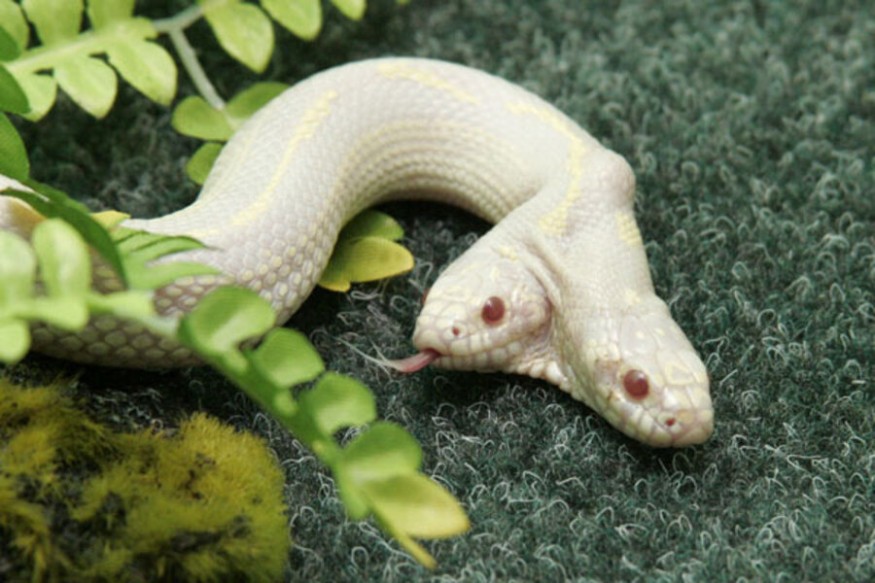
Over the years, reliable reports of two-headed animal sightings have proved how strange the animal kingdom can be. While this can look untruthful and too unusual, it does occur in this world full of possibilities.
This eye-catching developmental abnormality known as bicephaly, or the condition of having two heads, is nothing new and actually been sighted at least 150 million years ago in what is now China, in which the specimen was recovered from a treasure trove of fossils.
For the past years, records of these veritable menagerie of two-headed creatures had been found reliable, on which the most common are the two-headed snakes.
Famous YouTuber and Wildlife enthusiast Brian Barczyk shared an Instagram post last week a clip of 'Two headed Ben and Jerry' eating two mice simultaneously, leaving people in the internet either stunned or squeamish-ed. The video garnered over 2.7 lakh views and hundreds of comments, as well as multiple and reactions from many viewers.
"Uncommon, but are not unheard of."
Instances of encountering a two-headed reptile can be strange and very unusual, but it is ironically normal, if not for the irregularity.
Last year, a rare wolf snake with two fully formed heads was found in Odisha, the heads working independently of each other. Meanwhile, a two-headed eastern copperhead snake discovered in a home in Woodbridge, Virginia, have "one head that's a little bit more dominant over the other one."
Florida Fish and Wildlife Conservation Commission said that bicephaly occurs "during embryo development when two monozygotic twins failed to separate, leaving the heads conjoined onto a single body", and are unlikely to survive in the wild.
"Without special care, such animals usually die early because they have difficulty escaping predators and foraging for food," said Dr Kleopfer, from the Virginia Department of Game and Inland Fisheries.
"Two brains make different decisions that inhibit the ability to feed or escape from predators," added the Commission.
Biological distinction among two-headed snakes
People over the internet have been bombarding questions about the rarely seen two-headed snake: Do they have two digestive tracts or does it meet along the way and go into one? Do they have two digestive systems?
Gordon Burghardt of the University of Tennessee discovered some years ago a snake that had two separate stomachs with "two heads that fought over prey", but survived for 20 years. In more recent years, a two-headed yellow anaconda snake was discovered in Brazil that was said to have two hearts, three lungs, two livers, and two stomachs.
While it is very uncommon, there are actually hundreds of two-headed snakes' sightings over the centuries, and they seem to be more common than two-headed mammals.
Justin Adams of Monash University said that the biological explanation for this is that a mammal's body tend to 'fact-check' to prevent the implantation of embryos that carry errors like this. "If there are errors in development, there are miscarriages and spontaneous abortions," he noted.
This irregularity has a much higher frequency to be conceived, but fewer chance to survive long enough to be born.
© 2025 NatureWorldNews.com All rights reserved. Do not reproduce without permission.





